Many people these days are familiar with the term yoga, even if they’ve never taken a class. As a physical practice and global wellness phenomenon, yoga has gained worldwide popularity in modern history. But this ancient practice dates back some 5,000 years and is rooted in philosophy and spirituality.
Now, think about this: yoga, its philosophies, and methods have survived thousands of years, passed down through the knowledge of sages, scholars, and yoga texts, and spread from ancient India to the Western world. Pretty remarkable!
Exploring the history of yoga and its philosophies deepened my relationship with yoga. When I sit to practice pranayama, for example, I remember that I am following the same process and connecting to the same universal consciousness as generations of yogis before me — and that feels rather significant.
Whether you’re a curious yogi like me or are just wondering how those Sun Salutations traveled from ancient India to your Instagram feed, diving into the history of yoga is a fascinating exploration!
Contents
- 1 The History of Yoga Through Time and Text
- 2 Mythological Origins of Yoga: Lord Shiva and the Saptarishis
- 3 The Vedic Period
- 4 Yoga Development in the Upanishadic Period
- 5 Foundations of Specific Yoga Systems
- 6 Classical Yoga: Sage Patanjali and the Yoga Sutras
- 7 Influences of Buddhism and Śramaṇa Movement
- 8 Transition of Yoga to Western Culture
- 9 Shift from Spiritual to Physical Practice
- 10 Honoring Yoga’s Traditions Through Modern Practices
- 10.1 FAQ 1: What are some popular modern yoga styles?
- 10.2 FAQ 2: How did yoga transition to the Western world?
- 10.3 FAQ 3: Has modern yoga completely lost its spiritual aspect?
- 10.4 FAQ 4: Can I start practicing yoga at any age?
- 10.5 FAQ 5: Is daily practice necessary for benefiting from yoga?
- 10.6 FAQ 6: How is modern yoga different from traditional yoga?
- 10.7 FAQ 7: Can I practice yoga at home?
- 10.8 Was this helpful?
The History of Yoga Through Time and Text
Diving into the history of yoga, we uncover a rich tapestry that spans centuries, from the yogic traditions of asana, meditation, and pranayama practices to the teachings of several sacred texts beginning in the Vedic Period (1500-500 BCE).
Before We Dive In
The history of yoga spans thousands of years, which you can imagine is a lot of knowledge to fit into one blog post! To help break it down for you, we’ll begin looking at the history of yoga through the lens of philosophy in addition to textual references.
- You’ll see how different philosophies rooted in Hinduism (Samkhya and Advaita Vedanta), Buddhism, and Jainism intertwine to influence yoga philosophy.
- You’ll become familiar with a few key texts, including the Rigveda, the Upanishads, Mahabharata, and the Yoga Sutras. Without these transformative works, the evolution of yoga philosophy and the spread of its practices would not have been possible.
So, yogis, scholars, and curious minds — are you ready?
Let’s turn back the clock a few thousand years and journey through yoga’s fascinating history, examining how each chapter of its development was shaped by an essential piece of yogic literature and the philosophy of the times.
Mythological Origins of Yoga: Lord Shiva and the Saptarishis
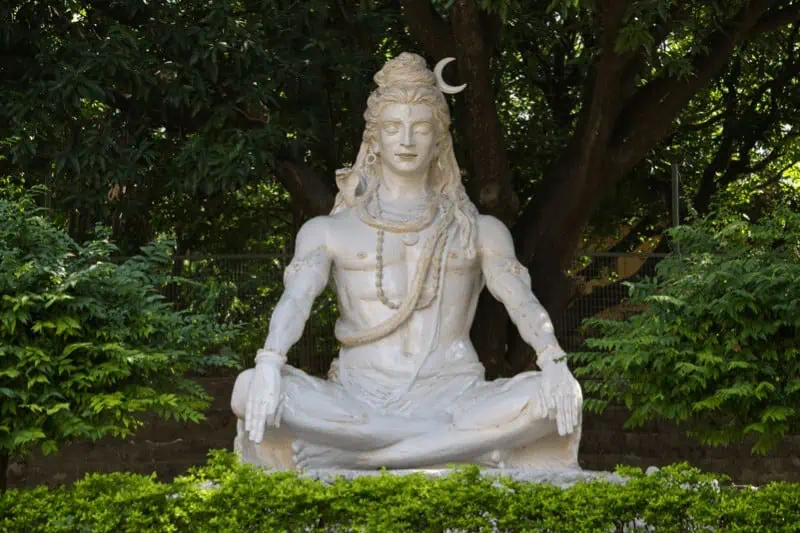
According to Hindu mythology passed down through oral traditions, yoga begins with Lord Shiva, the Adi-Yogi, or the very first yogi.
Legend has it that one day, many thousands of years ago, Lord Shiva was sitting in a cave in a deep state of yogic meditation. The Seven Sages, Saptarishis, were drawn to Lord Shiva’s powerful presence and waited patiently for him to emerge from his meditation.
Lord Shiva, recognizing their sincere desire for divine knowledge, passed his yoga methods on to the Seven Sages, who became the first yoga disciples. As the stewards of this ancient knowledge, the Saptarishis began to spread Shiva’s yoga teachings throughout the ancient world, laying the foundation for the rich tradition of yoga that we know today.
This legend demonstrates the sacred origins of yoga and the important place it holds in Hinduism. In all its forms from ancient to modern history, yoga remains a gift from a divine source (Shiva), sacred knowledge passed down through thousands of years.
The Vedic Period

Rigveda: The Dawn of Yoga
The Rigveda, dating sometime between 1500 and 1200 BCE, is one of the oldest sacred texts of Hinduism and the first known text mentioning practices resembling what would become yoga in later years. The Rigveda:
- Contained hymns, prayers, and mantras chanted by Vedic priests.
- Included references to yogic concepts like meditation and self-discipline.
- Planted seeds for the development of later philosophies like Samkhya (sometimes spelled Sankhya) and Advaita Vedanta.
Although the Rigveda is not technically considered a yoga text, it set the stage for the development of yoga in the Upanishadic period to follow.
Role of Vedic Priests in Early Yoga Practices
Vedic priests, also called rishis or Brahmin, preserved the teachings and practices of the period by passing down knowledge through oral tradition. The hymns and mantras of the Rigveda created the foundations for rituals and techniques like meditation and other yogic practices.
Without the efforts of the Vedic priests who preserved the spiritual knowledge of the Rigveda, it’s hard to say whether later yoga texts would exist and, of course, yoga practice as we know it today.
Connection Between Vedic Rituals and Yogic Meditation
There’s a profound link between Vedic rituals and yogic meditation. Both aim at achieving spiritual connection and share many of the methods we still use today.
- Vedic priests used meditation and deep concentration to calm the mind and focus consciousness before performing rituals.
- Chanting of mantras and mental visualization were standard methods of meditation.
- Vedic rituals purify the mind and body in preparation for deep meditation, similar to the effects of asana and pranayama practices.
With the Vedic Period and the Rigveda laying the philosophical and spiritual groundwork, the next era of yoga defined the practice and solidified the yogic traditions we still practice today.
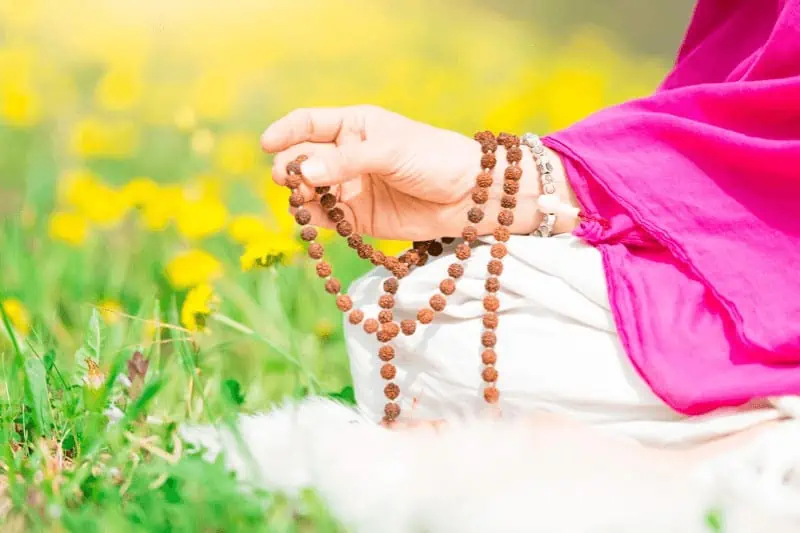
Yoga Development in the Upanishadic Period
The Upanishads, a collection of ancient Sanskrit texts central to the spiritual and philosophical concepts of yoga, broadly defined the next developmental period in the history of yoga.
The Upanishadic period (800-200 BCE) introduced new philosophical ideas like spiritual liberation and self-realization and expanded upon the concepts of meditation, pranayama, and other practices. During this era, yoga evolved from a ceremonial practice to a more spiritual and philosophical system.
Several influential texts composed during this period played significant roles in shaping yoga philosophy and practice, helping to advance the development of the practice as we know it today.
- The Upanishads: These are philosophical texts that introduced the concepts of atman (the individual soul), Brahman (ultimate reality or supreme consciousness), and moksha (spiritual liberation through self-realization).
- The Mahabharata: This epic text is crucial for Hinduism and yoga philosophy. It references dharma (duty or righteousness), ethics, and karma (right action). These central ideas would evolve into the tenets of yoga philosophy.
- The Bhagavad Gita: This text is included in the Mahabharata and is the most well-known part. It introduces the four main yogic paths: Bhakti Yoga (devotion), Jnana Yoga (knowledge), Karma Yoga (selfless action), and Dhyana Yoga (the yoga of meditation). These teachings have greatly influenced the philosophy and practice of yoga.
Yoga Philosophy in The Upanishads
The Upanishadic period also advanced the philosophical foundations of yoga. These philosophies explored the nature of reality, consciousness, and the self, laying the foundation for yoga’s spiritual and contemplative aspects. They also guided practitioners toward yoga’s ultimate goal, liberation (moksha) from the cycle of birth and death.
- Samkhya: This dualistic philosophy recognizes two fundamental realities: Purusha (individual consciousness) and Prakriti (matter). In the philosophy of Samkhya (or Sankhya), one achieves spiritual liberation through realizing the difference between eternal consciousness and the material world.
- Advaita Vedanta: A non-dualistic philosophy that proposes the idea of a singular reality, Brahman, which is the ultimate truth beyond the perception of the senses. According to Advaita Vedanta, enlightenment occurs with the union of the self and divine consciousness.
Foundations of Specific Yoga Systems

Emergence of Kundalini
The Upanishads’ importance in the history of yoga cannot be understated. This yoga text provides the earliest references to Kundalini energy, Kundalini Yoga, the chakras system, and Tantra. These energetic principles shaped the development of yoga systems and philosophy in the following centuries.
The term Kundalini refers to the dormant, cosmic energy resting at the spine’s base, which can be awakened through specific yogic practices.
- This awakening is the primary goal of Kundalini Yoga, a form of yoga that combines postures, breath control, meditation, and the chanting of mantras.
The Upanishads also introduce the concept of chakras, energy centers within the body. Seven main chakras align along the spine, from its base to the crown of the head, each representing different aspects of consciousness.
Lastly, the Upanishads also laid the foundation for the later development of Tantra as a path to spiritual realization. Although the tantra system took shape in later centuries, its principles are rooted in the Upanishadic and Vedic traditions.
- Tantric yoga methods aim to awaken and transform the body’s energies (including Kundalini) to experience spiritual transformation. Tantra involves synthesizing various elements, including using rituals, meditation, and breathing exercises.
Model of Four Yogic Paths
The Bhagavad Gita, another essential yoga text and part of the Mahabharata, outlines four specific yoga methods that influenced the diversity of yoga traditions as they developed over the centuries.
- Karma Yoga: the yoga of action. The impact of Karma Yoga has shaped the understanding of yoga as a practice for physical well-being and ethical and moral development. It encourages practitioners to live a life of duty and responsibility, contributing to the overall harmony of the universe.
- Bhakti Yoga: the path of devotion and love towards a higher power or God. It emphasizes emotional engagement and surrender as a way to attain spiritual enlightenment. Bhakti Yoga has given rise to various practices like chanting, prayer, and rituals that are now integral to many yoga traditions.
- Jnana Yoga: the path of knowledge. Jnana Yoga encourages the use of the mind to question, explore, and understand the nature of reality. The influence of Jnana Yoga can be seen in the philosophical depth of yoga and introspective practices, fostering mental clarity and self-realization.
- Dhyana Yoga: the path of meditation. The impact of Dhyana Yoga has popularized meditation as a core aspect of yoga, promoting mental wellness and stress management. It has also introduced techniques for mind control and concentration, enhancing the overall effectiveness of yoga practice.

Classical Yoga: Sage Patanjali and the Yoga Sutras
The next era in the history of yoga development, the Classical Yoga period (200 BCE – 200 CE), is when the yoga system took shape, thanks to the Yoga Sutras of Sage Patanjali.
Patanjali’s Influence on Classical Yoga
Sage Patanjali, a teacher and scholar from around the 2nd century BCE, is often hailed as “the father of yoga.” His work, the Yoga Sutras, is a traditional text that outlines practices for mastering the mind and achieving spiritual liberation. This text provides the foundation for many modern yoga traditions. It’s a big deal in yoga philosophy.
The Yoga Sutras contain 196 verses and are divided into four chapters: Samadhi Pada (concentration), Sadhana Pada (practical aspects), Vibhuti Pada (powers or manifestations), and Kaivalya Pada (spiritual liberation or moksha).
Each chapter of the Yoga Sutras expands on the philosophy and practices of yoga while guiding on the path to self-realization and enlightenment.
Patanjali Defines the Eight Limbs of Yoga
One of the most significant contributions of Sage Patanjali and the Yoga Sutras is defining the system for practicing yoga known as Ashtanga — the Eight Limbs of yoga, or the Eight-Fold Path. The methods outlined in the second chapter of the Sutra remain the basis for how we practice yoga today.
Sage Patanjali’s Eight Limbs provides a model for yoga practice that a yogi progresses through systematically, with the ultimate goal being spiritual enlightenment.
- Yama: ethics and proper conduct for life
- Niyama: individual moral codes to follow
- Asana: physical practice of yoga postures
- Pranayama: breath control techniques
- Pratyahara: sensory withdrawal
- Dharana: single-pointed concentration
- Dhyana: meditation
- Samadhi: bliss or enlightenment
In the Yoga Sutras, Sage Patanjali combined spiritual knowledge and practical elements of earlier yoga traditions while providing a structured system for practice. Following Patanjali’s methods, yoga becomes a way of life rather than just a form of exercise or a spiritual path.
Influences of Buddhism and Śramaṇa Movement
Buddha’s teachings and practices have also shaped yoga, intertwining mindfulness meditation with yogic principles. The Śramaṇa movement, which shares many principles of the yoga sutras, emphasizes renunciation, meditation, self-discipline, and yoga practices.
Buddha’s Teachings on Yoga
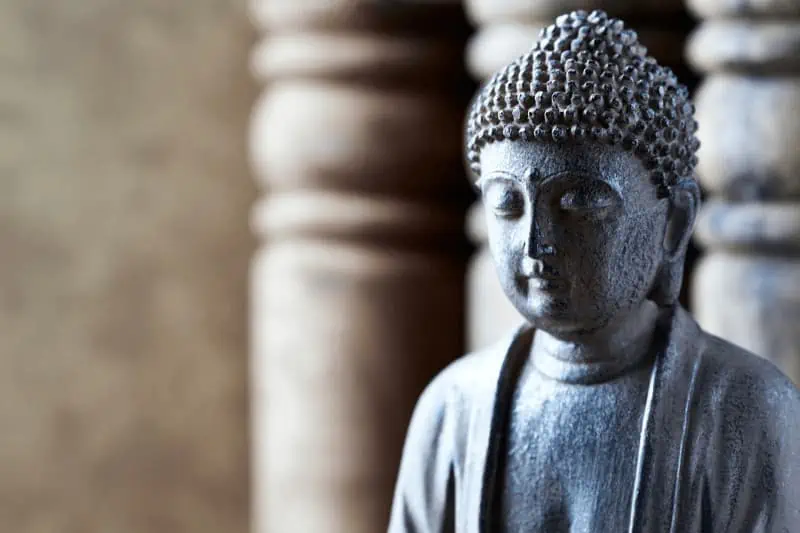
Buddhism had a profound impact on yoga. Scholars suggest that Buddha’s teachings largely influenced the meditative aspects of yoga. For instance, the concept of universal consciousness in yoga aligns with Buddhist philosophy.
- Mindfulness practices in Buddhism mirror the yoga sutras technique of focusing on one’s breath to achieve a meditative state.
Integration of Buddhist Practices and Yogic Principles
Integrating Buddhist mindfulness practices and yogic principles is evident in many ways. Both yoga systems aim for moksha – liberation from worldly suffering.
Many modern-day yoga practitioners incorporate Buddhist meditation techniques and mantras to enhance focus and inner peace.
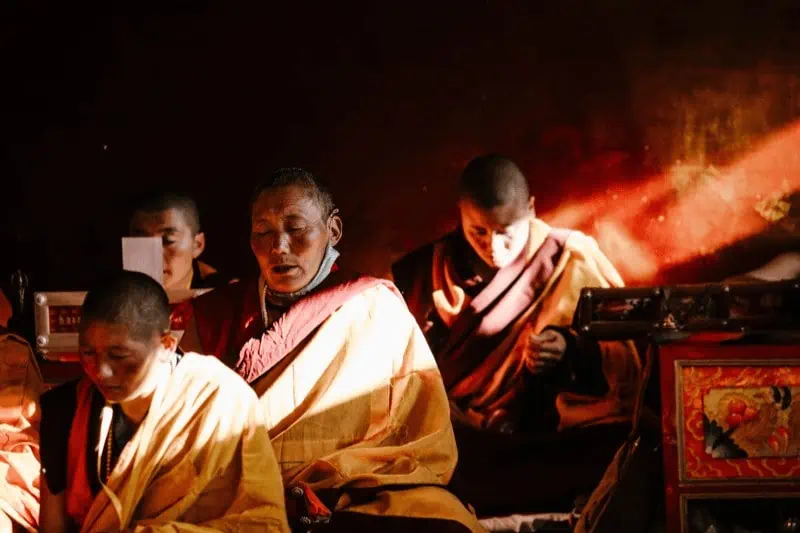
Influence from Śramaṇa Movement and Jainism
The Śramaṇa movement (6th century BCE) significantly influenced early yoga philosophy. It emphasized renunciation, meditation, and self-discipline—principles central to yogic practices today.
Jainism, which emerged around the same time as the Śramaṇa tradition, shared many principles and philosophical foundations, exploring ideas of karma, the nature of the self, and spiritual liberation.
- Jain yoga originated in the ancient Indian religion of Jainism and is believed to have influenced the development of later yoga traditions, particularly those emphasizing non-violence and asceticism.
While some scholars debate the precise timeline of these religious movements, the philosophical and spiritual ideas of Jainism and the Sramana movement influenced the ideas shared by Sage Patanjali in his Yoga Sutras.
To study the history of yoga, it is vital to understand the basic concepts of these philosophies and how they contributed to its development.
Transition of Yoga to Western Culture
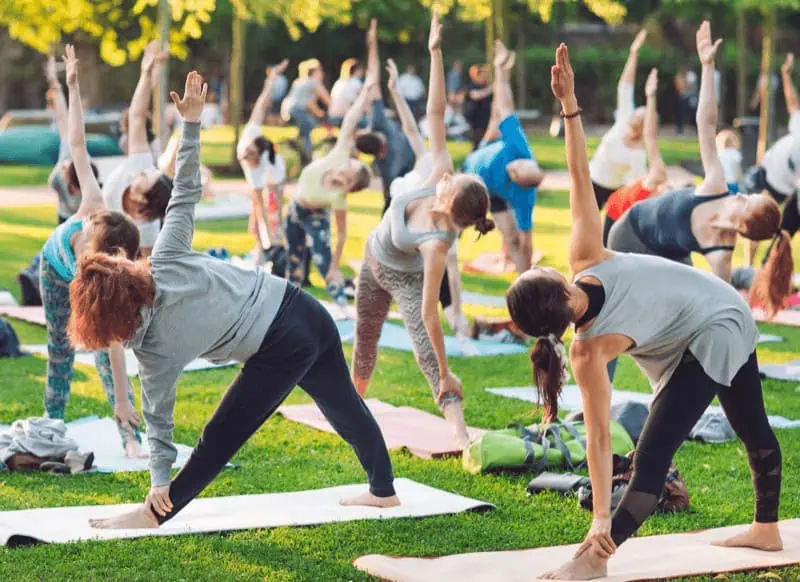
Yoga’s Journey to the West
So, how did yoga, an ancient practice from India, make its way into Western societies? It didn’t happen overnight; it was a process of adaptation and evolution throughout the 19th and 20th centuries.
Key Figures in Western Yoga
Several individuals played vital roles in this transition.
- T. Krishnamacharya, considered the “father of modern yoga,” revived traditional yoga practices such as Hatha yoga and was a prolific teacher, training many yoga instructors who significantly influenced yoga in the Western world.
- Swami Vivekananda introduced yoga philosophy to the West during his famous speech at the World Parliament of Religions in 1893.
- B.K.S. Iyengar, a student of Krishnamacharya, developed his Iyengar system of yoga, which focuses on posture and alignment and the therapeutic aspects of yoga.
- K. Pattabhi Jois, another teacher trained under Krishnamacharya, is credited with introducing the practice of Ashtanga Yoga to a global community.
Different schools of yoga emerged from this impressive lineage of gurus throughout the 20th century, each following a similar model of asanas (postures), pranayama (breathing exercises), and meditation.
There are a number of notable yoga gurus from the last couple of centuries, although we’ve mentioned just a few of them here. Are you curious about other influential teachers? You can read about them here.
Evolutionary Changes for Western Practitioners
Over the years, yoga has evolved significantly in the West. Traditional practices were modified to suit Western audiences better. For instance, yoga asanas focused more on physical exercise than spiritual development.
Here are some fundamental changes:
- More emphasis on body postures
- Diversification and addition of many asanas
- Less focus on meditation and withdrawal
- Incorporation of contemporary exercise science
These modifications have led to what we now know as “modern yoga.” Despite these changes, the essence remains a practice for overall well-being.
What is “The Synthesis Model?”
The synthesis model is a term coined by Western yoga scholars to explain the hybrid approach to yoga that blends traditional Eastern practices with modern Western science.
This model acknowledges the spiritual and philosophical traditions of yoga while also incorporating contemporary understandings of anatomy, physiology, and psychology.
The goal is to create a holistic and adaptable practice that respects yoga’s origins and is relevant to today’s global society. This so-called synthesis model emphasizes physical postures, breath control, mindfulness, and an openness to innovation and adaptation.
Shift from Spiritual to Physical Practice
From its ancient roots as a spiritual discipline, yoga has evolved to fit the needs and interests of our active, health-focused modern society.
Originally, yoga was about reaching a higher consciousness — a philosophy or way of life more than a form of exercise. Today, yoga ps more of a wellness movement, promoting practices that keep your body and mind healthy and strong.
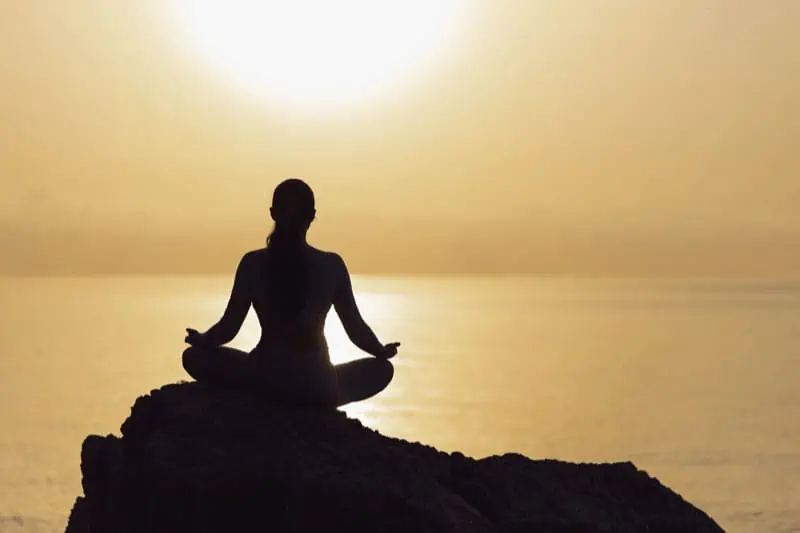
Honoring Yoga’s Traditions Through Modern Practices
The history of yoga, from its origin in the Vedic period through its evolution into the modern practices we see today, is a testament to its enduring relevance. Yoga has adapted across cultures and centuries, demonstrating a remarkable adaptability.
Whether you’re an experienced yoga practitioner or just starting your yoga practice, there’s always more to study and explore in this rich yoga tradition. We’ve only scratched the surface here, but if you feel inspired to learn more about the ancient traditions and knowledge of yoga, I recommend starting with the Bhagavad Gita and Patanjali’s Yoga Sutras.
Indeed, modern yoga practices and contemporary wellness trends will continue to evolve and change. As members of the yoga community, let’s commit to keeping the tradition, the heart of yoga, alive and beating. As you level up your yoga practice, remember that every pose holds centuries of wisdom!

FAQ 1: What are some popular modern yoga styles?
A number of popular yoga styles have emerged in modern history: Vinyasa Yoga, Ashtanga Yoga, Bikram Yoga (Hot Yoga), Kundalini, and Yin Yoga, to name a few. Each of these yoga styles uses unique methods to approach health holistically.
FAQ 2: How did yoga transition to the Western world?
Yoga debuted in Western culture during the late 19th century and early 20th century through the work of Swami Vivekananda. Over the 20th century, yoga spread through the teachings of B.K.S. Iyengar and K. Pattabhi Jois, who each developed their own schools of yoga practice. During this transition, yoga evolved to focus more on physical postures rather than spiritual enlightenment.
FAQ 3: Has modern yoga completely lost its spiritual aspect?
No, while it’s true that many people practice yoga for physical benefits like flexibility and strength, many styles still emphasize spirituality and mindfulness.
FAQ 4: Can I start practicing yoga at any age?
Absolutely! Individuals of all ages can practice yoga. However, it’s advisable to consult with your healthcare provider before starting any new fitness regimen, including yoga.
FAQ 5: Is daily practice necessary for benefiting from yoga?
While regular practice does enhance benefits significantly, even doing yoga once or twice a week can help improve flexibility and strength and reduce stress.
FAQ 6: How is modern yoga different from traditional yoga?
Modern yoga often focuses more on physical postures (asanas) and breathing exercises (pranayama), while classical yoga also includes ethics, self-discipline, meditation, and the ultimate goal of spiritual enlightenment.
FAQ 7: Can I practice yoga at home?
Yes, you can practice yoga at home. There are numerous online resources available for beginners as well as advanced practitioners.


